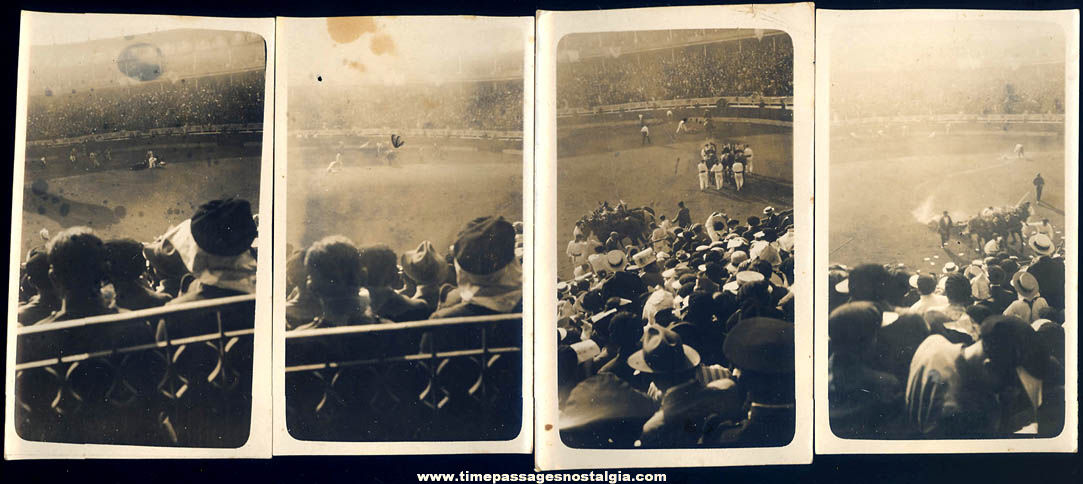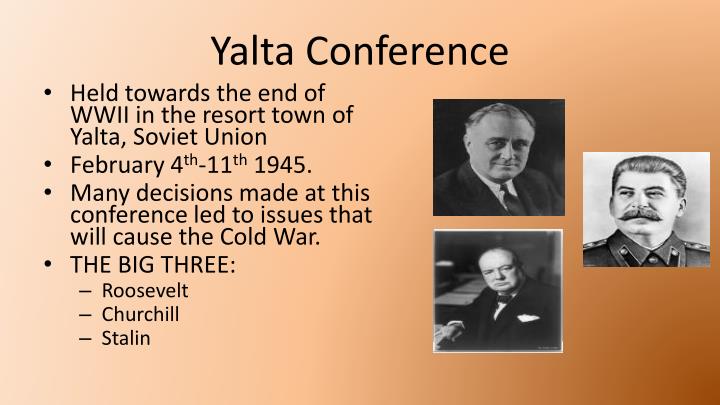

It was over the issue of the postwar status of Poland, however, that the animosity and mistrust between the United States and the Soviet Union that would characterize the Cold War were most readily apparent. READ MORE: How the 'Big Three' Teed Up the Cold War at the 1945 Yalta Conference However, the Soviets did agree to join in the war against Japan 90 days after Hitler’s Germany was defeated. As for the United Nations, Stalin wanted all 16 Soviet republics represented in the General Assembly, but settled for three (the Soviet Union as a whole, Belorussia, and the Ukraine). Many issues pertaining to Germany were deferred for further discussion. There was no definite determination of financial aid for Russia. None of them left Yalta completely satisfied. Roosevelt’s goals included consensus on establishment of the United Nations and gaining Soviet agreement to enter the war against Japan once Hitler had been defeated. Churchill had the protection of the British Empire foremost in his mind, but also wanted to clarify the postwar status of Germany.


and British recognition of a Soviet sphere of influence in eastern Europe were the main objectives. For Stalin, postwar economic assistance for Russia, and U.S. troops landed in Japan unopposed.Meeting in the city of Yalta in the Russian Crimean from February 4 to 11, Roosevelt, Churchill, and Stalin each arrived with their own agendas for the conference. atomic attacks and the Soviet offensive forced a Japanese surrender. On August 15, the combination of the U.S. The next day, the United States dropped another atomic bomb on Nagasaki, and the Soviets launched a massive offensive against the Japanese in Manchuria. Two days later, true to its pledge at Yalta, the Soviet Union declared war against Japan. On August 6, it dropped one of these deadly weapons on Hiroshima, Japan. On July 16, the United States successfully tested an atomic bomb in the New Mexico desert. In April, he traveled to his cottage in Warm Springs, Georgia, to rest and on April 12 died of a cerebral hemorrhage. In that speech, he called the conference “a turning point, I hope, in our history, and therefore in the history of the world.” He would not live long enough, however, to see the iron curtain drop along the lines of division laid out at Yalta. Congress on Yalta he was no longer strong enough to stand with the support of braces. Roosevelt returned to the United States exhausted, and when he went to address the U.S. Most of the Yalta accords remained secret until after World War II, and the items that were revealed, such as Allied plans for Germany and the United Nations, were generally applauded. The British and Americans would oversee the transition to democracy in countries such as Italy, Austria and Greece.
YALTA CONFERENCE FREE
The Soviets were to administer those European countries they liberated but promised to hold free elections. Germany would be divided into four zones of occupation administered by the three major powers and France and was to be thoroughly demilitarized and its war criminals brought to trial. With victory over Germany three months away, Churchill and Stalin were more intent on dividing Europe into zones of political influence than in addressing military considerations. What was then called the Crimea conference was held at the old summer palace of Czar Nicholas II on the outskirts of Yalta, now a city in the independent Ukraine. Roosevelt, British Prime Minister Winston Churchill, and Soviet Premier Joseph Stalin-and the war had progressed mightily since their last meeting, which had taken place in Tehran in late 1943. It was the second conference of the “Big Three” Allied leaders-U.S. On February 11, 1945, a week of intensive bargaining by the leaders of the three major Allied powers ends in Yalta, a Soviet resort town on the Black Sea.


 0 kommentar(er)
0 kommentar(er)
